How Far Is the Leach Field From the Septic Tank? (& How to Find It)
-
Pete Ortiz
- Last updated:
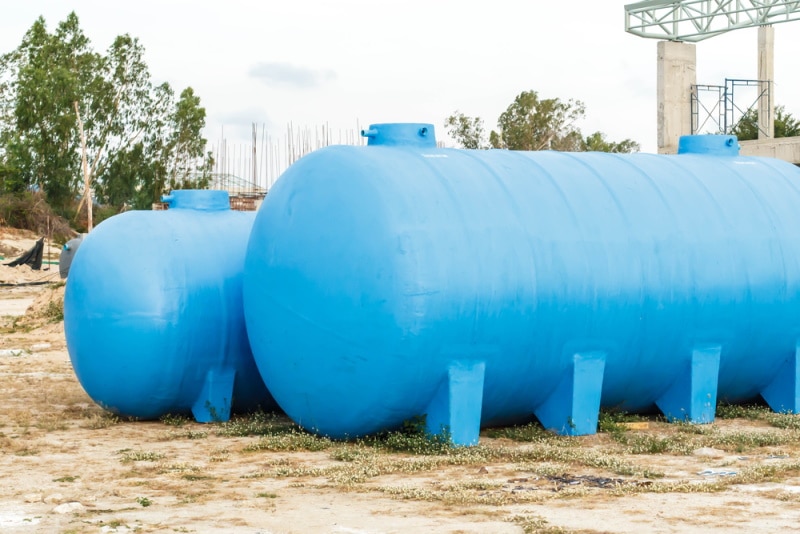
A septic tank is a crucial part of any home, which is where all drainage waste from the main house is deposited. The leach field (also known as the drain field) filters the wastewater and makes it less concentrated. Before installing a septic system, you should know how far the leach field is. Most experts recommend that the distance between the leach field and the septic tank should be 5 to 10 feet.
In this post, we’ll expound more about the leach field and what it does for you. We’ll also tell you why this distance is crucial to the functioning of your septic system. Keep reading to learn more!
 What Is a Leach Field?
What Is a Leach Field?
A leach field is a system of pipes placed in the ground to treat wastewater. The system uses sand and gravel to filter out harmful substances from the water. Then, the water flows into a septic tank or sewage treatment plant.
The leach field has two sections. There’s a section that treats incoming wastes and another that recharges groundwater. Water flows through the entire system in both directions, but only one section is for waste removal.
Usually, the leach field is made from concrete or plastic pipe. You can install it in a trench or underground close to the edge of your property. This way, you don’t have to dig up your yard or grassy area when installing it.
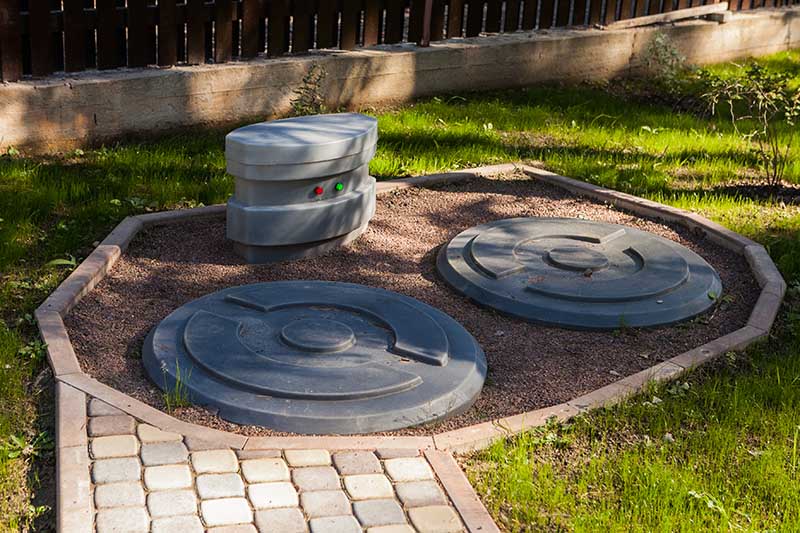
Why Is the Distance Between the Septic Tank and the Leach Field Crucial?
The distance is crucial because it determines how long the wastewater takes to travel from the septic tank to the leach field and it may vary depending on where you live. That’s why it’s crucial to find out. Besides, the distance from the septic tank to the leach field is crucial to the functioning of both systems. The leach field has a non-permeable lining that allows water to pass through but stops biological action. The design of the leach field determines how far away it should be from the septic tank.
If the distance is too short, the wastewater may not have time to digest well and treat the solid waste in the septic tank before reaching the leach field. It can make the leach field clogged, and in turn, cause the septic system to fail.
On the other hand, if the distance is too long, the wastewater may cool and solidify, which can also cause the septic system to fail.
So, it’s crucial to maintain a suitable distance between the septic tank and the leach field to ensure the proper functioning of the septic system.
Factors Affecting the Distance of the Leach Field/Drain Field
1. Local Authority Laws
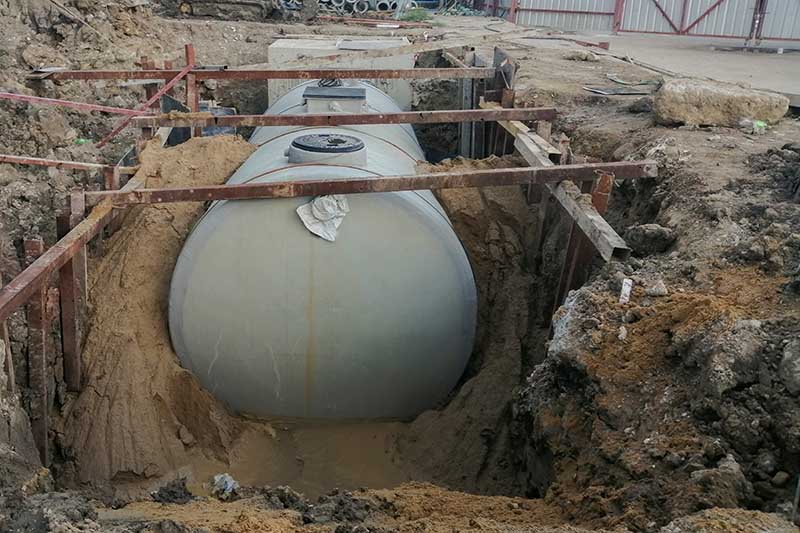
Different localities have regulations about the distance of the leach field from the septic tank. These septic tank regulations are put in place to protect public health and the environment.
They specify the minimum distance between the leach field and the septic tank. As mentioned earlier, the distance should be between 5 to 10 feet.
2. Soil type
The type of soil in the area can affect the distance of the leach field. Some soils are more permeable than others, thus allowing water to pass through more easily. If the soil is permeable, the leach field can be located further away from the septic tank.
If the soil is less permeable, the leach field needs to be closer to the septic tank to ensure proper drainage.
3. The Water Table
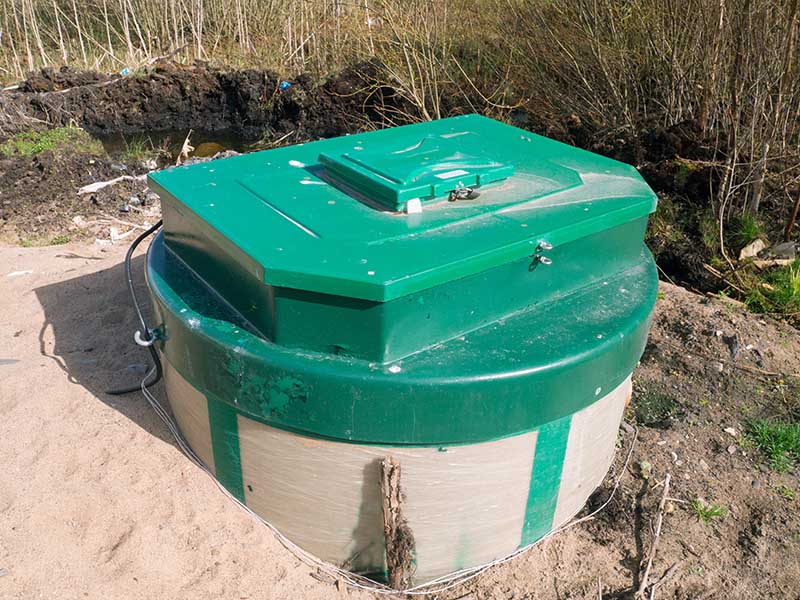
The water table can also affect the distance of the leach field. If the water table is high, the leach field must be located further away from the septic tank to avoid flooding. The leach field can be located closer to the septic tank if the water table is low.
How to Find Where the Leach Field Is on a Property
- Scan the Area for Markers: These appear as long stripes along the ground. They comprise small stones or pieces of concrete. These marks are where different soil layers have been removed for construction or drainage purposes. Usually, the septic tank has a cement marker the size of a manhole cover. The septic tank is approximately 10 to 20 feet away from your household. Once you find the septic tank, move downward. If you find an empty downward-sloping field, that’s the leach field.
- Explore Your Yard for Gravel: The best way to locate your leach field is to walk around your yard. Look for large patches of gravel that are different from the surrounding area. Drain lines get buried in gravel to guide wastewater through the treatment procedure. Exploring your yard for gravel can be challenging. Most yards have a fair amount of dirt or other types of grasses between the gravel and the house.
- Check County Records: County records are the best source for locating your leach field. They will have the deed, plat maps of the area, and an index of those property records. The best place to check the septic records is at the county’s permitting department.
- Check Downhill Areas: As mentioned above, the leach field is in an area that’s downhill from the septic tank. Look for low-lying areas on your property that are likely to be downhill from the septic tank.
- Consult an Expert: If you cannot locate the leach field on your own, you may want to consult a professional, such as a plumber or septic system technician. They will have experience working with septic systems and will help you locate the leach field.
- Ask your Neighbors: After moving into a new home, you can ask the neighbors if they know where the leach field may be. Also, check with the previous owner of your home. They may be able to tell you where the leach field is.
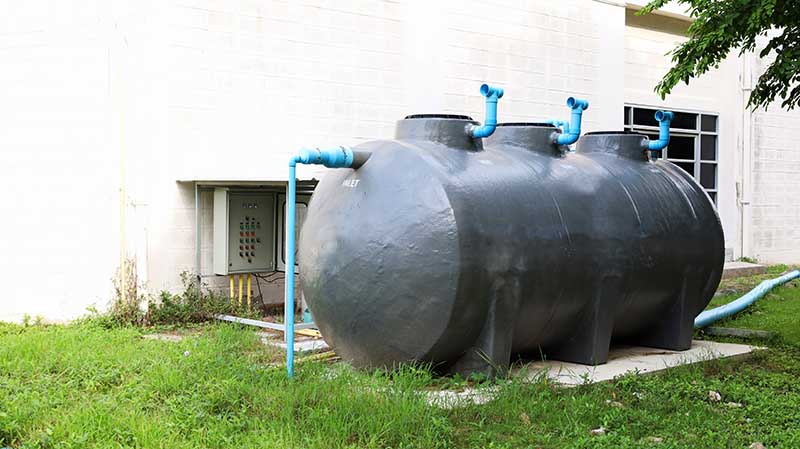
What You Can or Cannot Do on Your Septic Tank’s Drain Field
- Don’t Plant Vegetation That Harms the Septic System: Don’t plant trees, shrubs, or other vegetation with deep roots in the drain field. These plants may cause problems with your septic system. They will also block the path of water and waste through the system. The deep and expansive roots wrap around septic pipes. Besides, the roots may crush the septic system pipes.
- Don’t Install Structures: To improve the appearance of your yard, you may want to install a structure. It could be a garden shed, floating decks, or a gazebo. These structures are risky to the leach field. Besides, decks are heavy. That means you cannot install them safely on a septic field. Decks will also stop the growth of beneficial vegetation on the leach field.
- Don’t Set Up a Pool or Water Features: Pool or water features are a great idea that’s easy to set up in a yard. But, if you have a septic system, it won’t work out well. The water in your pool will sink into the ground and make its way through the drain field, which can cause problems for your septic system. Water features like pools will make your septic system ineffective. They form sites around your home, and these sites also collect harmful contaminants.
- Don’t Install Semi-Permanent Playground Equipment: It’s not recommended to install semi-permanent playground equipment on your septic drain field. The drain field consists of a series of pipes and trenches buried underground and filled with gravel to help filter out impurities and contaminants from the wastewater before it’s released into the soil. Installing semi-permanent playground equipment on your drain field can damage the pipes. It can also result in costly repairs and even harm the environment. It’s best to keep the drain field free from any activities or heavy structures that can cause damage.
- Consider Planting Vegetation That Benefits the Septic System: You can plant vegetation that will benefit the septic system. This could be native grasses, trees, and shrubs. These plants will help filter out excess waste from the septic tank and make it easier for it to work well. They will also help in evapotranspiration. They’ll also mitigate the hazardous effects of erosion. Some plants like boxwood shrubs, hollyhocks, spring shrubs, and azalea shrubs boost the septic field’s aesthetic appeal.
- Set Up a Lightweight Swing Set: There are many things you can do on a leach field. One of them is to create a lightweight swing set on your drain field. This is an excellent idea as it will allow your kids to enjoy the freedom of swinging and playing on their own swing set. However, do not use a swing set with wide roofing. It may block the sun from getting to the beneficial vegetation you have planted in the area.
- Install an Open-Air Kennel: A kennel is a small, enclosed area that holds pets. It can be used as a temporary shelter for your pet. You can construct it on your leach field. The only thing you need to make sure of is that it doesn’t have a roof. A roof will interfere with the evapotranspiration procedure.
 Conclusion
Conclusion
It’s crucial to locate the leach field a safe distance from the septic tank to ensure proper treatment and disposal of wastewater. The distance depends on local regulations and the size and type of your septic system.
Generally, the leach field should be at least 5 to 10 feet from the septic tank. It’s also crucial to put the leach field in an area with good drainage and soil conditions to ensure it functions properly. Consult with a local septic professional or building department to determine the specific requirements for your property.
Featured Image Credit: bit mechanic, Shutterstock
Contents

 What Is a Leach Field?
What Is a Leach Field?
